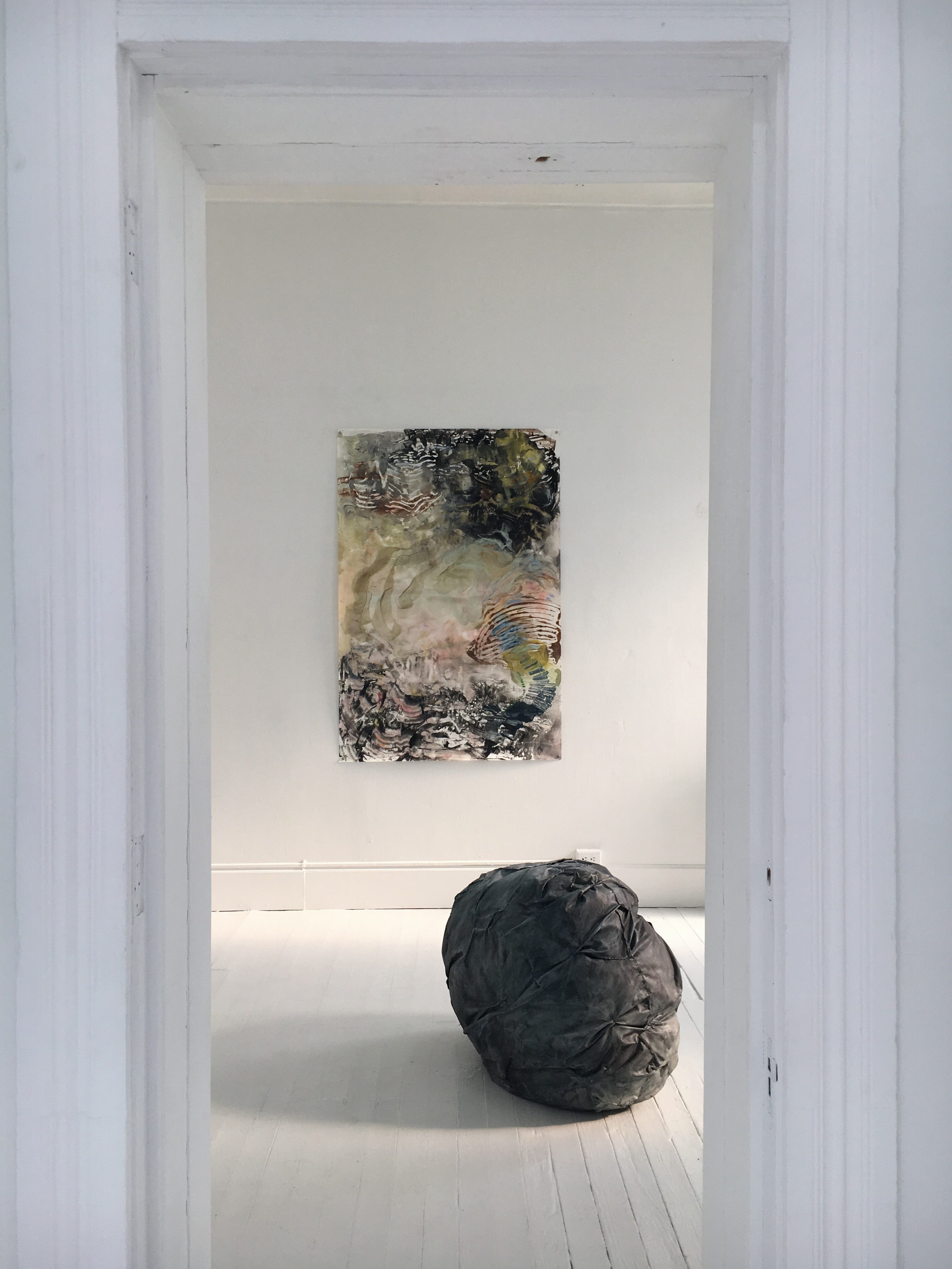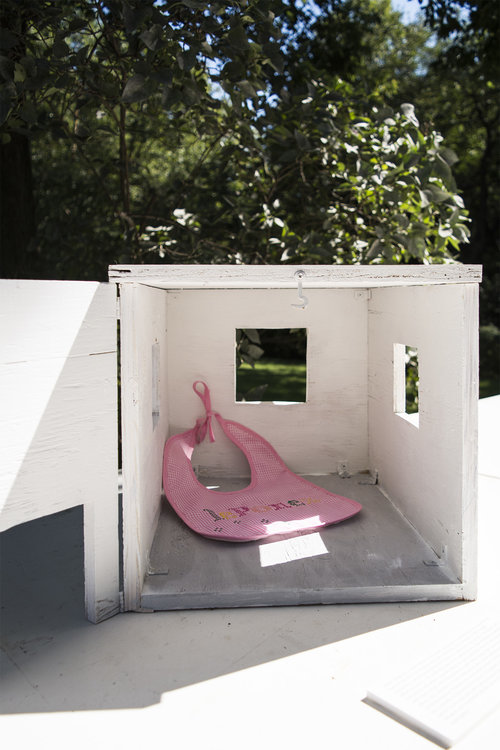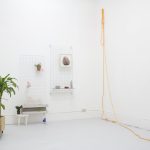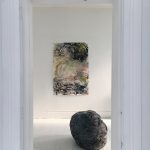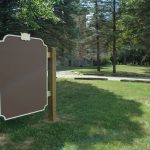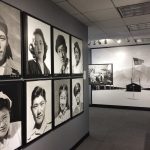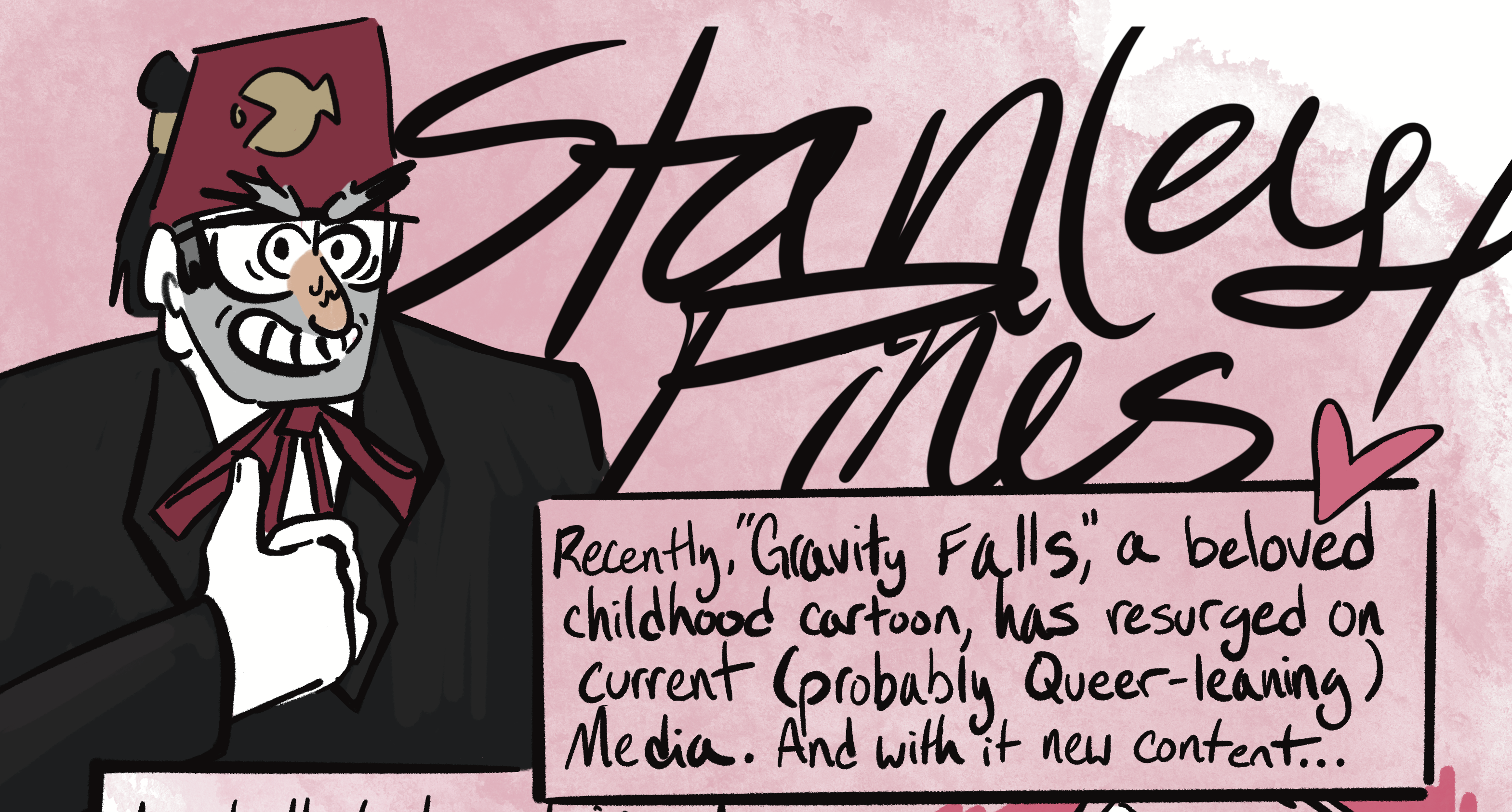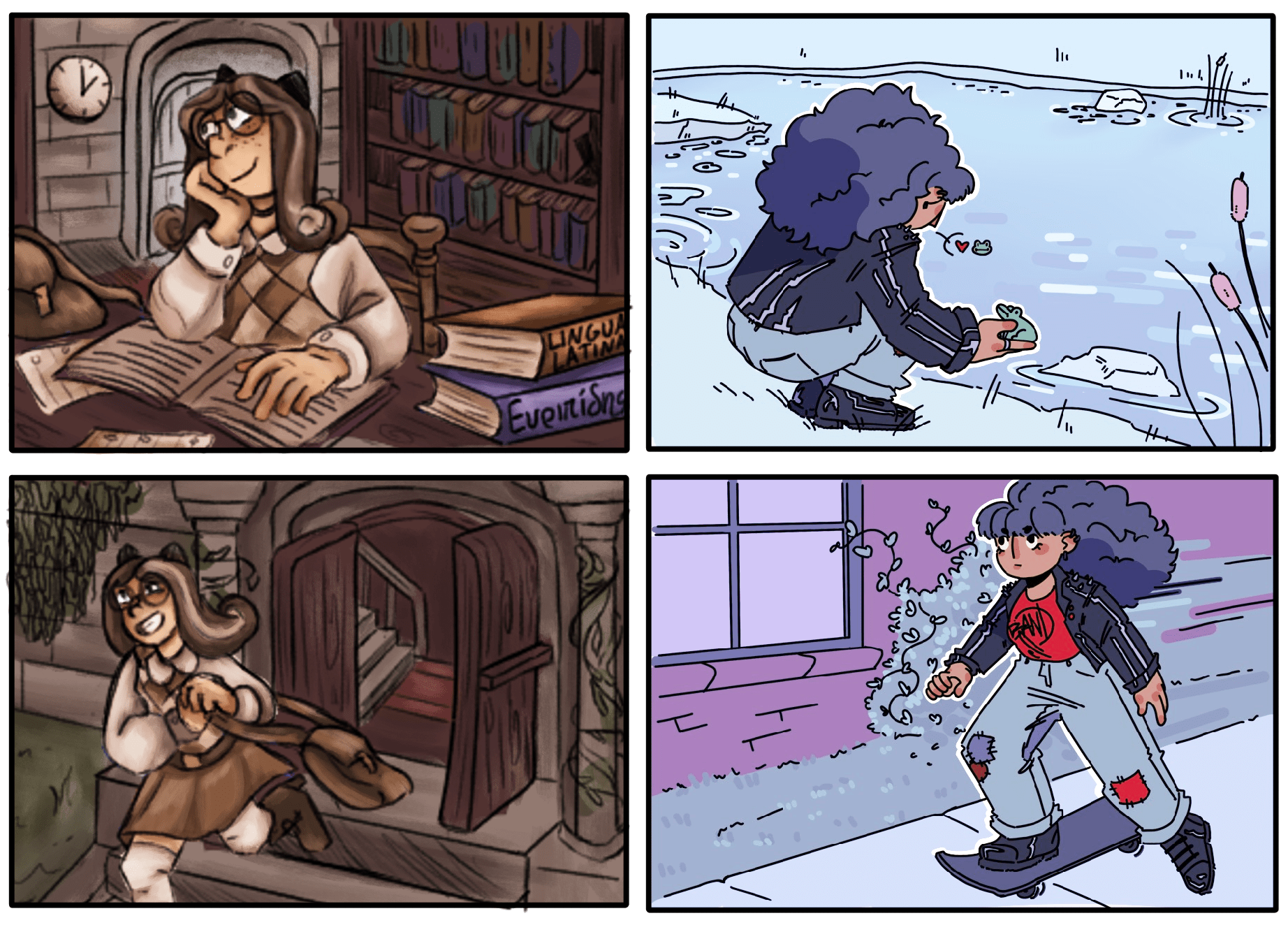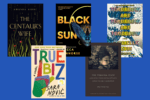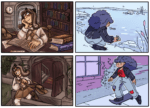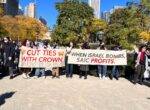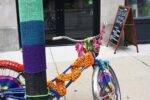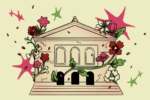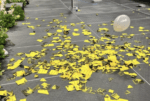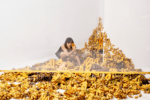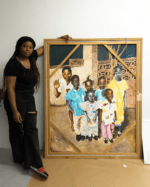With countless galleries, residencies, and alternative art spaces in Chicago, it can be tough to imagine contemporary art thriving outside the city — but it definitely does. I decided to contact four art spaces in the Midwest to learn about the cool things that are happening outside the city limits and asked about various aspects of their work.
Located downstate in Springfield, DEMO Project is a contemporary art gallery with a very particular backstory. The small house has been slated for demolition since 2013, and will be demolished in early 2018 to accommodate new facilities for the Springfield Art Association. With the end in sight, I emailed founding members Allison Lacher and Jeff Robinson about their experience running the space.
I also contacted Project 1612 in Peoria, Illinois. Project 1612 is a project space located in the detached garage of artist and curator Jessica Bingham. Exhibitions at Project 1612 usually only last the length of the opening, which gives an immediacy and urgency to the work. I talked to Jessica Bingham and Alexander Martin, the gallery’s co-founders and curators, about connecting with their community and curating Point 1612, a miniature version of the main space.
More closely connected to the Chicago art community is Michelle Grabner, who teaches Painting and Drawing at SAIC and founded The Poor Farm. Started as a residency and project space in Little Wolf, Wisconsin, programming at The Poor Farm runs in conjunction with The Suburban, Michelle’s other exhibition space in Milwaukee, Wisconsin, which she runs with husband Brad Killam. I communicated briefly with Michelle about how The Poor Farm was started.
The Neon Heater is a contemporary art gallery in Findlay, Ohio. Founded in 2012 by Ian Breidenbach and Emily Jay, its name comes from the bright green heater in the corner of the space. I emailed Ian and Emily about their curatorial process and working with artists from Chicago and across the Midwest.
Origins
Project 1612
“The genesis of Point 1612 was twofold. We were doing an event where we were presenting on the space and wanted to make a maquette. As we were planning, the design of the maquette became more permanent. We also wanted to plan for the future so that if we move, a part of the space would be able to come with us. Having the smaller space alongside [Project 1612] now offers different ways in which to engage audiences and artists. We have had artists curate the smaller space as they work in the larger one; we have had artists work in both spaces for the same show. We feel like this adds more to the conversation and shows the capabilities of really anywhere operating as possible space in an accessible environment.” — JB
The Poor Farm
“I was driving back to Chicago with my family from our studio in rural Waupaca County, Wisconsin, and we noticed a For Sale sign in the lawn of the Poor Farm on Highway BB. I mentioned to my husband, Brad Killam, that we would need to find storage for a survey exhibition which was being returned to me in the fall, so the practical matter of storage, organization, and archiving was the impetus to purchase the property. However, my husband and I quickly understood that The Poor Farm was a compelling complement to The Suburban. Its vast spaces, rural location, and its seasonal relationship to time offer artists an engagement contrary to the small spaces and context proffered by The Suburban.” — MG
DEMO Project
“When DEMO was first getting started, the first six or so shows [featured] artists we invited so that we could get started with a strong roster. As the early calendar solidified, we issued our first call for proposals. From that call we set our programming, but we always left one or two slots open so that we could have a little flexibility if we needed it or to invite an artist that seemed particularly right for our space. We posted a call every year and the majority of our shows came from responses to that call. When it was time to review, all DEMO partners would get together and review the materials, discuss the potential, and make decisions as a group. That has been the structure for four years, and very little has changed. I’d say the one change I could note is that “later” years at DEMO have started to see more curatorial projects, both from proposals and from us inviting curators, while the earlier DEMO years focused more on solo projects.” — AL
The Neon Heater
“When I started the gallery, I tried to keep my artistic and curatorial practices separate. They were two halves of one full output. There were ideas that didn’t necessarily fit with the work I was making, but I still wanted an outlet to explore them. Over the years as my work has grown more socially conscious and my curatorial style has become more and more conceptual, they’ve started to mingle.” — IB
Curatorial Processes
The Neon Heater
“The curatorial process is quite fluid. In terms of curating the yearly programming, we’ve done an open call for the past two years. We try to answer a question or address a larger theme for the year. This year, we sat down right after the inauguration to sift through the open call submissions. We were pretty shaken at that point, and were asking ourselves, you know, ‘Who are we now? What are our responsibilities as artists in this world?’ We decided to curate the year around these questions. We chose artists whose work addressed in some way what it meant to be a creator, an artist, and also just a human being in a world so seemingly askew. After that initial culling process [when curating], our job is basically done. We’ve always leave up to the artist what work is shown. We like to say that we don’t curate the work, we curate the artists. The Heater has always functioned as a space for experimentation and play, free from any consumer worries, and our location and budget allow for that.” — IB
The Poor Farm
“We try to reflect current cultural discourses in our programming, but we also hope to address cultural blind spots, as well.” — MG
Project 1612
“We send out a call that has a deadline on November 1. After the call is completed, we gather as an organization and go through the applicants, organizing them into “yes,” “no,” and “maybes.” After that, we narrow it down until we fill the show spots for the year. Sometimes we’ll have a spot open for an exhibition and contact artists to see if they are interested in showing. With Point 1612, it is an ongoing call and we curate as we get applicants. Our first year curating was a little bit hectic, but as we have gone on the process is more streamlined.” — JB
The Neon Heater
“When Emily joined the gallery, we really entered into the second phase of the space. Now it’s more of a conversation, which has been good, and, in my opinion, has really pushed us forward.” — IB
DEMO Project
“We have a higher turnover than most spaces [since] we present a show every month and have two galleries. That is a lot of management, manpower, and resources — right now, the DEMO team is very sincerely tired. DEMO will come down in early 2018; I know that the team needs a rest. It will also be important to see the response from the community when DEMO goes away, and we need to really absorb the project once it ends. We need to consider, ‘What just happened?’ and think about, if there is something to come next, ‘What does it need to be? How does that evolve from DEMO to serve our community best?’ We have no immediate plans; if something does happen, it certainly won’t happen right away. But we haven’t ruled anything out. Anything is possible.” — AL
Community
DEMO Project
“Springfield has been a good audience; we’ve had many local supporters over the years. It’s helped that we’re directly next to the Springfield Art Association (SAA); a lot of the time we have our openings on the same night, so we get the SAA crowd wandering to DEMO. They tend to be an older and more conservative crowd, but they’ve always been curious and have voiced their support for something new and more progressive. I think the community realizes that contemporary art is important to the future of Springfield, but I’m not sure they know what to make of that or what to do with it. But we have loved this community and will always value the support we have received. Sometimes our shows will mystify an audience — but we’ve never seen that as a bad thing.” — AL
Project 1612
“The Peoria community has had a very positive response to our programming. At first, it felt like we were on the periphery of everyone’s radar. They knew about us from articles or seeing us online, but have not experienced the space for themselves. But as we have gone on we have been getting more people from the community coming to the exhibitions and enjoying them. I think we provide shows that are not often witnessed in the Peoria area, so it piques people’s interest.” — JB
The Neon Heater
“The art community of Findlay has really embraced our presence. Twice a year there is an artwalk that draws crowds in the hundreds up to the space. For these openings, we try to bring in artists from further away and curate shows that perhaps challenge traditional ideas of what art is. For the most part, the community has really responded favorably to these shows, and it’s been able to start some really meaningful conversations. We’re in the process of trying to reach out to the community in a more meaningful way, particularly by getting local colleges involved in the space. We’re currently planning our seventh year of exhibitions, and I think I’m allowed to divulge that we’re going to see a bit of a convergence of the conceptual narrative frameworks from our personal work and the shows we curate, so stay tuned for that.” — IB
Relationship with Chicago
DEMO Project
“DEMO has a great relationship with Chicago, and I would say that over the years the majority of our artists have come from Chicago, though we have exhibited artists really from all over. It helps to have the proximity and the in-state reputation. I think Chicago Artists Resource has been key in reaching Chicago. Plus, a lot of our own personal network is in Chicago, so there’s cross-pollination. Chicago has shown us a lot of love and [has] helped to propel our space, and we certainly have a lot of respect for the Chicago community. I think at first we really had to earn our reputation because people within the state were so quick to disparage Springfield or anything that was happening here. I’m so happy to see that perception has truly diminished.” — AL
Project 1612
“I would say it is a good relationship. We get a lot of artists that come in from Chicago, so the communication between Peoria’s art community and the Chicago art community has been increasing. We have also gotten involved with groups from Chicago such as 60 Inches From Center in trying to connect the central Illinois arts community to Chicago’s.” — JB
The Neon Heater
“When people closer to the coasts say they’re ‘going to the city,’ they mean one of two places — but being in the Midwest, it’s a good day’s drive to New York and at least two days to Los Angeles. Chicago is our city. We’re able to get there and back in a day if we need to. Being where we are, most of our contact [with artists] before the work arrives is digital. The proximity to Chicago has really allowed for us to make a lot of friends, do studio visits, and actually to see the work. Over the years we’ve had the chance to show quite a few Chicago based artists, [but] it’s never necessarily been because of the proximity but for the quality of their work.” — JB
The Poor Farm
“Chicago and the Midwest affords us the resources and the freedoms to be supportive of artists and their ideas.” — GB



